Slanted FlyingJournal of Tai Chi Chuan
Training
Aligning With Gravity In Taijiquan
In Taijiquan (太極拳) solo practice, one aligns with gravity and only an imaginary opponent that does not produce forces that impact us. But the forces from an actual opponent can come from almost any angle, rather than just vertically from above like the force of gravity does. This article discusses how Taijiquan directs an opponent’s forces into the practitioners “root” (the legs and down into the feet) and the ground.
We habitually respond to forces in front of us by pushing back, or by pulling to our rear. This is, essentially responding horizontally. We have taught ourselves from childhood to use our weight against resistant objects that we wish to move, which is reflected in the sayings “put your back into it” or “throwing your weight around.” But if we push or pull against something that suddenly gives way, we can lose our balance and may fall down. This is the result of acting on forces horizontally.
This horizontal approach can be exploited because of the loss of stability when the pressure suddenly changes, and Taijiquan warns against leaning against the opponent. Wu Yuxiang (武禹襄) wrote (Paul Brennan translation): “With your headtop pressing up naturally and energy sinking down to your elixir field, there will be no leaning in any direction. The Song says: ‘Your tailbone is centered and spirit penetrates to your headtop, thus your whole body will be nimble and your headtop will be pulled up as if suspended.’”
Although Wu does not explicitly mention an opponent, the effect of the mentioned up and down energies produces a verticality that counters the tendency to lean horizontally. If one tries to brace with the rear leg, especially if simultaneously leaning forward to push an opponent or to resist their incoming energy, then one is relying more on horizontal energy, and one loses their agility because that braced back leg can no longer be nimble, therefore reducing the agility of the entire body.
Horizontal resistance can produce the “butting cow” (顶牛 ding niu) error rather than rooting into the feet that we try to train. Rooting into the ground like a tree, and sinking energy down into the ground relies more on a vertically stacked alignment of the body; an alignment with gravity. Horizontal forces should be produced by the turning of the waist or shifting forward or back while maintaining a vertical mass, rather than pushing or angling one’s mass to lean against the opponent.
Wu also writes (Brennan translation) that “Your posture must be straight and comfortable, so as to brace in all directions.” I do not think that he means to “brace” rigidly so much as to be supported vertically, like a tall pole being held vertically by guy wire supports in several directions. We are directed to always maintain at least a slight bend in the legs rather than locking either leg straight, and maintaining bends one’s legs allows one to direct incoming energy more vertically into the ground.
Another way of viewing how Taijiquan attempts to align forces vertically is to consider the rounding of the crotch (圆裆 yuan dang, a roundness from the inside of one knee to the inside of the other) to be like the support provided by an architectural arch. One’s crotch should transmit forces vertically into one’s legs in a manner similar to how an architectural arch transmits forces vertically into its support columns. This is easiest to see when one is standing in mabu (馬步 horse stance), which is similar to how one’s legs are held when riding a horse.
When sitting on a horse, the crotch needs to be rounded to accommodate the horse’s body, while the knees are directed into the animal’s flanks, and the shins are more vertically directed down into the stirrups. One should be able to rise up off the saddle without the stirrups swinging way out to the sides. If one can rise up off the saddle (standing in the stirrups) while maintaining the legs in a manner that is similar to when seated in the saddle, then one will have the rounded crotch and energy directed downwards rather than outward; similar to what we want in Taijiquan.
The following posture of Chen Ziming (審定者) illustrates the rounded crotch and the verticality of the shins even when there is more weight on his right leg rather than being equal weighted as in a horse riding stance. The picture of Yang Chengfu (杨澄甫) shows the rounded crotch and verticality of the shins when in an equal weighted transitional stance in Yang style. The same principle is seen in the picture of Wu Jianquan’s (吴鉴泉) Wu style even thought the feet are more splayed outwards.
Contrast these with the Vitruvian Man illustration where the legs are straightened and form an inverted v-shape at the groin. On an icy or otherwise slippery surface it would be easy to understand Chen, Yang and Wu remaining comfortably stable whereas the Vitruvian Man would likely slide into the splits. Chen’s, Yang’s and Wu’s body weight is fairly vertical into the ground whereas the Vitruvian Man’s has big horizontal components to both the left and the right which rely on friction to provide stability.
Another analogy to view the verticality that we want is to think of the legs as springs rather than as braces. Springy legs compress into, and expand from, the feet/ground whereas braces are angled and rely on friction with the ground to transmit horizontal support. Wu Yuxiang also wrote (Brennan translation): “Starting from your foot, issue through your leg….” This reflects the springiness of the legs which transmit forces into and from the feet/ground. One should absorb and project to/from the feet/ground.
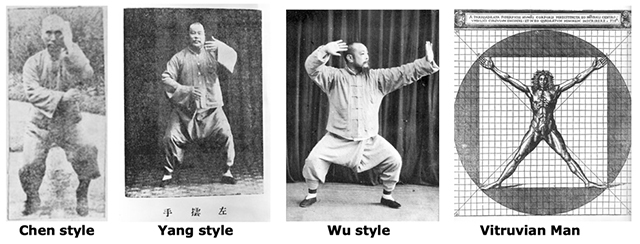

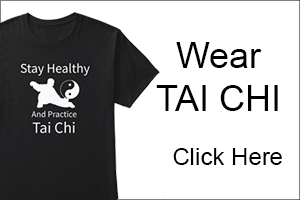

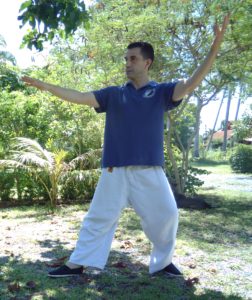
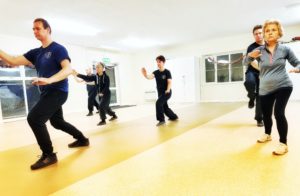
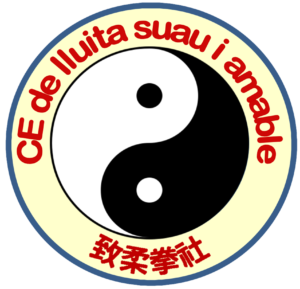
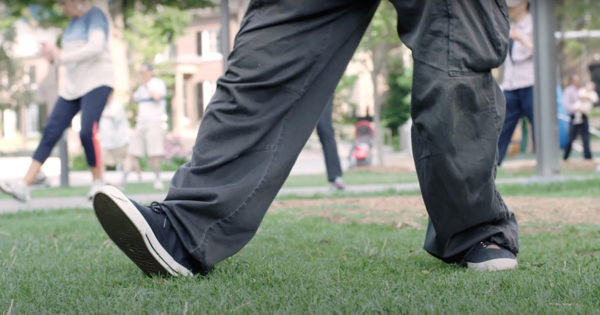
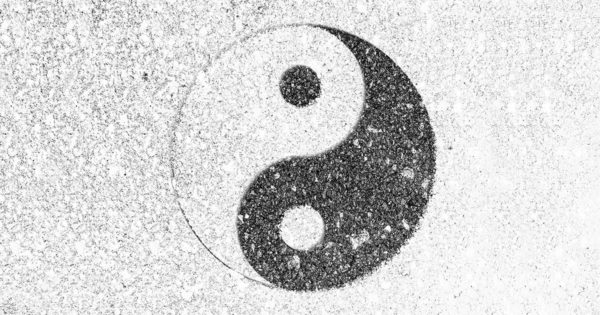
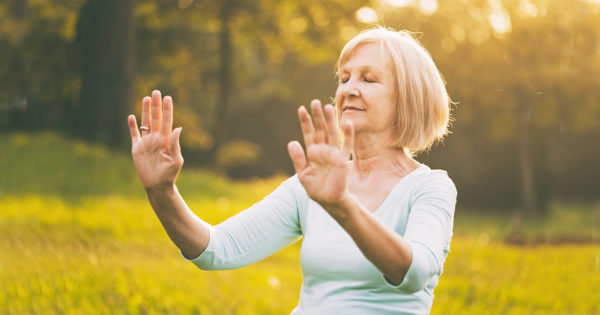
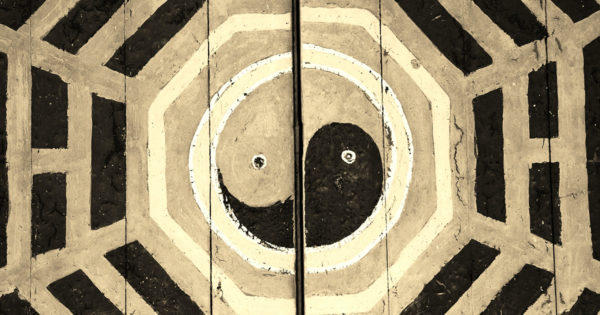
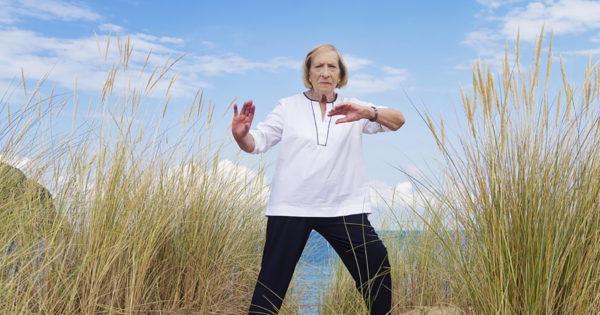


Great post. Thanks!
good post. clear explanation
Good and clear of the supporting, acting and balancing forcies in oud bodies.
I just started studying Tai Chi 2 months ago, and I have no words to express how you clarified hard concepts like ground path and head top.
Thanks so much!
Great article, gravity is the start of everything